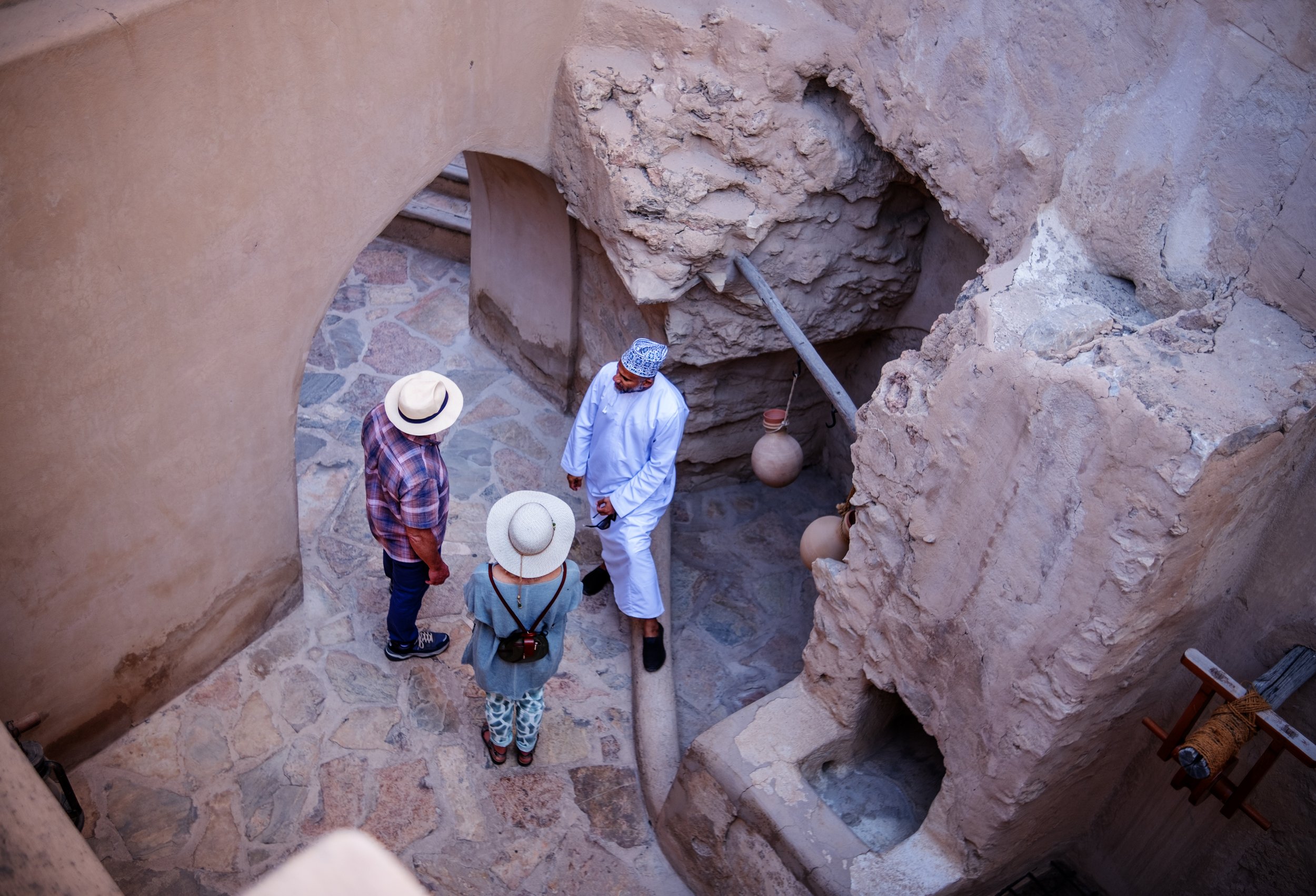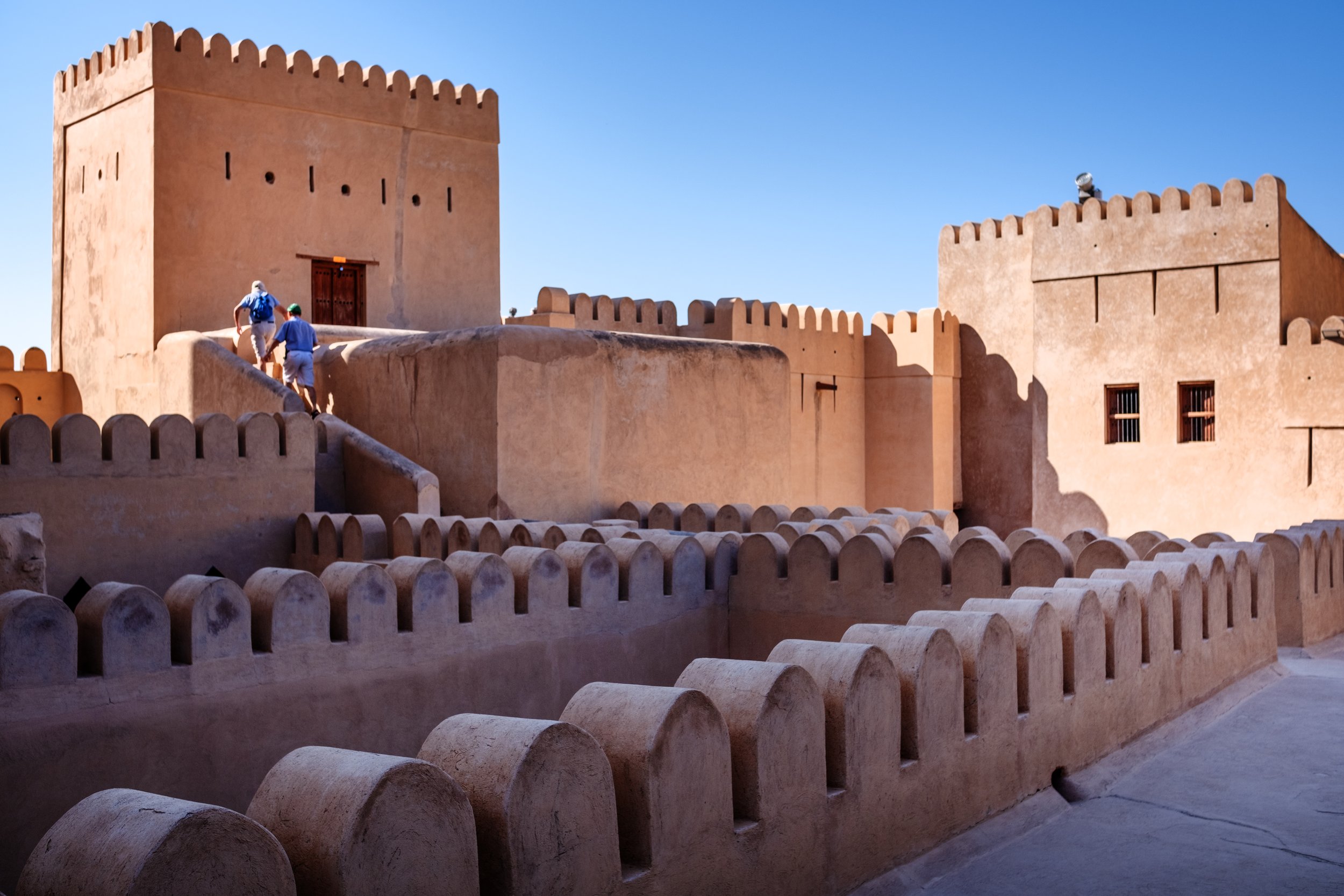Photographing Nizwa Fort of Oman
Capturing the Majestic Photos of Nizwa Fort: Oman's Architectural Gem and the Most Visited Site
Nizwa Fort, a popular tourist destination and a beautiful castle was built in the 17th century by Imam Sultan bin Saif Al Yarubi. Lies in the heart of Nizwa city, Nizwa Fort is famous in the Arab region for its cultural diverse significance and history. The most visited monument in the Oman, Nizwa Fort was built over a stream and took almost 12 years to complete. Due to the cultural and religous significance of the city, the Fort was a permanent seat for the noteable Imams (in Islam, the one who leads) and Walis (the pious) of that time. No wonder, due to such significance, the town of Nizwa served as the capital of Oman’s long history with several turbulence.
In today’s modern world, Nizwa is known as the Cultural Center of the Arab World.
The Architecture of the Fort of Nizwa
It is no wonder when you visit Nizwa Fort, you will notice that the entire architecture was built in the fortification style. Probably due to the era it belongs to, the Yarubi era in Oman was full of military advancement. The main point of focus is the drum shaped tower of the Fort where the Omani flag is posted these days. It has thick walls and doors which tells you how keen its architects were in converting it to one of the best fortified castles in the region.
When you enter, you will see two canons installed on the at the front gate. One of those canons still have engravement of the name Yarubi on it. The other canon doesnt belong to the rich Omani history but was gifted by the United States to the first Omani ambassador.
Due to its strategic location, the Nizwa Fort looks over the entire city. There are canons installed in the tower which fulfils the entire plan of bettlement. The shafts and the turret of the Fort makes intrusion an impossible task to achieve. Those who could reach the Nizwa Fort, was bombared with burning fire and hot oil thrown on them from the shafts above doors and walls of the Fort.
Nizwa Fort’s inner architecture design shows the increidible deception, which is the part of the grandeur fortification. Those who could survive the front wall fortification will then be tested by the maze inside the fort.
It is not easy to defy the deception of this fort. Rooms and rooms and then secret passages, makes it impossible for one to catch the light. The maze of the fort lies in betwen these dark passages connected through hundreds of small steepy staircases. It is impossible that someone will notice whats happening behind the thick walls of the fort, which has arch shaped shafts. These shafts were called murder holes, ideal to throw liquid substances like date syrup with oil to burn the enemy.
The tower has 120 spots for the military personel to stand guard and fire hell on the enemy. In the 17th century, use of muskets and flintlocks was very common. Apart from this strategic significance, there are 480 gun-ports. Just imagine what kind of hell they must have brought to the invaders from these key spots from the Tower of Nizwa Fort.
Apart from the secret hallways, staircases and passages, there are multiple well decorated places in the Nizwa Fort. Such as the royal library, which still exists in its original shape. In the Muslim culture, sitting down on the floor rug is considered more humble than on the tables. The same can be witnessed in this fort where rooms are decorated with carpets and cushion. People would sit down to discuss imprtant matters, or have a public gathering.
Inner walls of the Fort are adorned with cupboards, lamps, artifacts and books inside them, which depicts the rich Omani history. The structure from both inside and out is very well maintained till this day. There are no sign of age or past damages to the building, which makes it very safe for anyone to visit at anytime.
There is something very interesting about the exterior color of the Nizwa Fort’s walls. Everything depicts the lighter shade of the red and orange, especially when the sun lights strikes.
During peak touristy months of October till January, the fort is filled with tourists and tour operators. You will be welcomed by a group of performers at the main gate and then you will have entry into the Fort. The local traditional performance is an ongoing entertainment for the visitors. They beat traditional drums, sing songs of the nation and dance with swords and traditional Omani sticks in their hands. This is where you will see majority of the tourists making videos.
Importantly, Omanis are known for their generous and kind hearts. In case you want to interact with any of the performers or take picture, you shouldn’t be worrying about that. They will welcome with you open arms.
Nizwa Fort Souk
As commonly understood and seen in several monumental and historic cities, they always built religious sites and markets right next to the main fort. Same way, Nizwa Fort is also adjacent with the Nizwa Souk (market in Arabic). There are at least hundreds of shops in this market. One can buy tons of clay pottery and artifects (espcially jewelery) of the Arabian Region from this place. There is a bird market too, in case you can fly back with a bird to your country.
I still regret not exloring this beautiful market. For photographers and those who keeps great interest in cross cultural arnuments, this market is like heaven for them.
Jama Masjid (Mosque) of Nizwa
Nizwa Fort provides views of the city along with the famous (Mount) Jebel Al Akhdar from the top. When it comes to the old town of Nizwa, the Jama Masjid is the most prominent place. Right next to the fort, this beautiful mosque provides the essense of Islamic architecture of this town. Mosques in Oman has influence from the Persian region than of the Arab. Due to the close sea borders with today’s Iran, the Islamic Architecture in Oman has borrowed some elements from the Persian region, especially in the shape of domes and art work on the minarets. Similar shapes now can be seen in today’s Iran, Turkmanistan and Uxbekistan.
In the history, religious places were built clsoe the castles. There was always one centrepiece of such places where the ruler would also go. Jama Masjid next to Nizwa Fort was that place in the town of Nizwa. The Scenery below is photographed hundreds and thousands of times by the travellers.
Best time to visit Nizwa Fort
Ideal months to visit Nizwa Fort are from October till March. Weather is usually very good with no humidity and famous Arabian heat waves are gone too. Oman being close to the Persian Gulf has quite different weather conditions comapre to the rest of the Arab world. The country is less humid and crowded and people are incredibly kind and of loving nature.
Ideal time to visit is between the window of 10AM till 5PM. Sun would be up already, everything inside and out of the Nizwa Fort and the Souk would be clearly visible for you to see and take photos. When you are inside the Nizwa Fort, feel free to enter anything which interests you, dont be shy, laws in the Oman are very linient and freindly for tourists. You will find that the police and law and enforcement authorities just love to help you out with anything.
If you are there early, you will be able to finsih the whole tour in few hours and then you can head towards jey touristy points like Jebel Al Akhdar and roam around the old city of Nizwa and try the famous Omani roasted lambs :)









